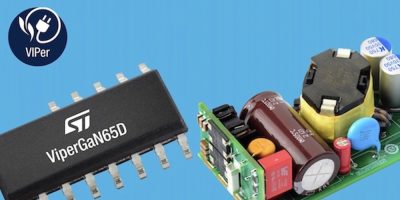The electric two-wheeler market is transforming the transportation industry as consumers embrace e-scooters and e-bikes for both recreational use and daily commuting. Microchip has announced the launch of its Electric Two-Wheeler (E2W) ecosystem, a suite of pre-validated reference designs that addresses key challenges in e-scooter and e-bike development, including power efficiency, system integration, safety and time-to-market. By offering automotive-grade, scalable solutions, Microchip enables manufacturers to streamline development and build reliable, feature-rich electric two-wheelers.
Microchip’s automotive-grade components and modular reference designs provide a flexible, scalable platform that adapts to various power levels and feature requirements. Backed by design files, schematics, Bill of Materials (BOM), and global technical support, developers can quickly bring next-generation e-scooters and e-bikes to market with optimised power, safety and intelligence.
“Manufacturers often struggle with optimising power efficiency, ensuring seamless system integration and meeting evolving safety standards,” said Joe Thomsen, corporate vice president of Microchip’s dsPIC business unit. “Microchip’s Electric Two-Wheeler Ecosystem directly addresses these design challenges with pre-validated, high-performance solutions that help accelerate product development and enhance vehicle reliability.”
Key Solutions of Microchip’s E2W Ecosystem
Optimised Power and Battery Efficiency
• Advanced Battery Management System (BMS) with intelligent power conversion and sensing maximises energy utilisation to extend battery life and vehicle range, as well as increases safety.
• 48V to 12V Power Conversion Reference Design ensures high-efficiency power distribution, improving overall system reliability.
Fast and Flexible Charging Solutions
• 7.4 kW Single-Phase AC EV Charger Reference Design offers reliable home charging with built-in protection features.
• USB-PD Dual Charging Port is designed to provide fast, flexible charging for mobile devices to enhance user convenience.
High-Performance Traction Motor Control
• 350W to 10 kW traction motor control reference designs deliver smooth acceleration, improved energy efficiency and precise control.
• Pre-integrated firmware and modular design simplify system development and reduces time-to-market.
Seamless System Integration and Smart Vehicle Control
• Vehicle Control Unit (VCU), Remote Keyless Entry (RKE), Hands-On/Off Detection and Acoustic Vehicle Alerting System (AVAS) work together to enhance the security and safety of the electric two-wheeler.
• Integrated telematics and asset tracking provide real-time monitoring, theft prevention and fleet management capabilities.
Intelligent Touch Display and Connected User Experience
• 720×720 round LCD Instrument Cluster using Microchip’s SAM9X75 MPU with MIPI® DSI, dual GbE and NAND Flash offers real-time data visualisation and smart connectivity.
• maXTouch ATMXT640UD and ATMXT641TD touchscreen controllers offers accurate touch performance in extreme weather and rain with thick gloves.
• Cloud-enabled remote diagnostics and performance tracking enhance the rider experience and optimise fleet operations.
Microchip’s Electric Two-Wheeler Ecosystem delivers pre-validated, high-performance solutions that help manufacturers reduce development time, optimise power efficiency and enhance safety in e-scooters and e-bikes. To learn more, visit Microchip’s Electric Two-Wheeler web page.







